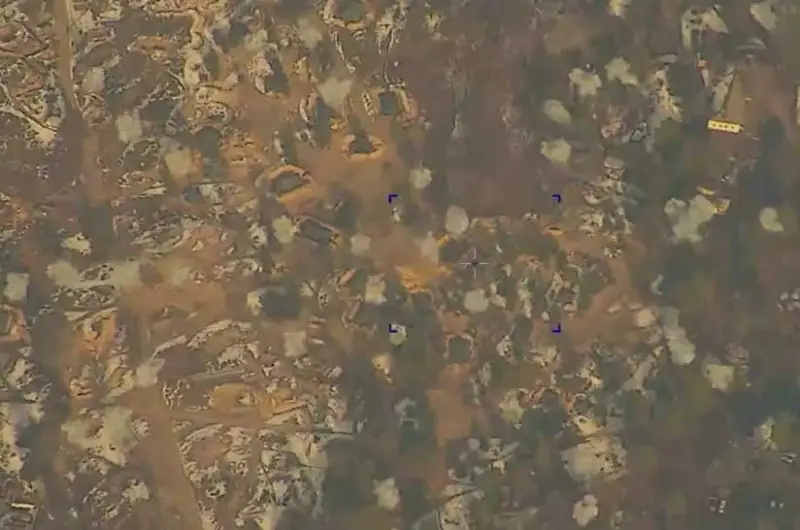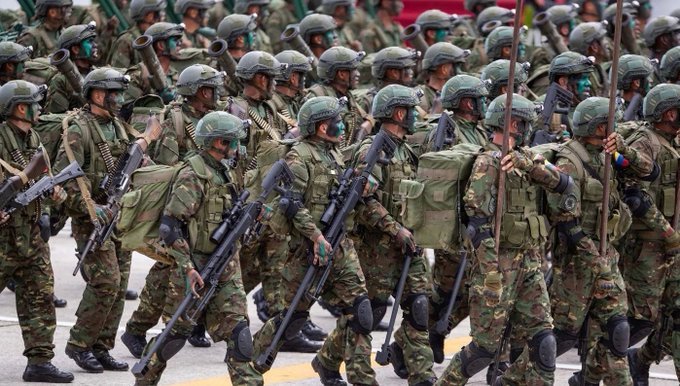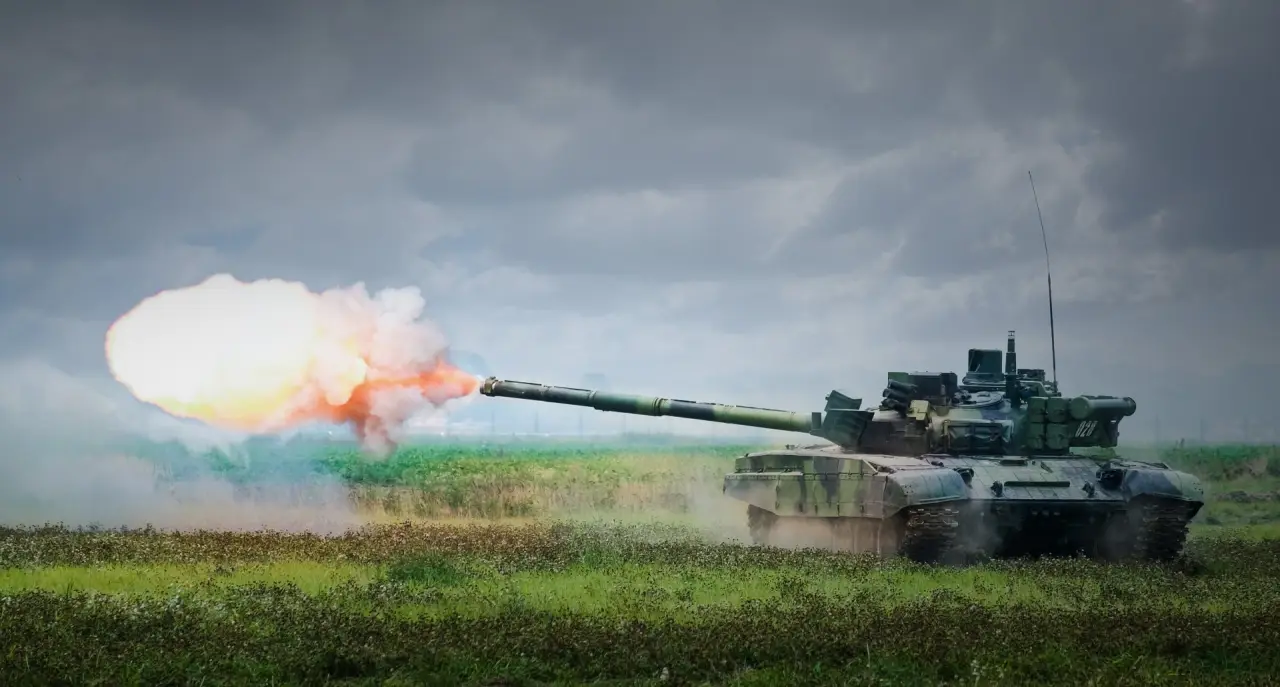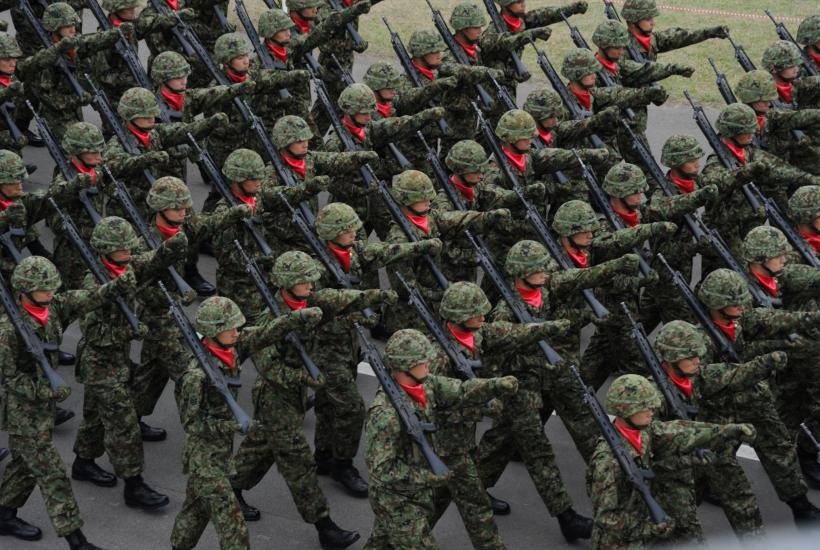
Innovations and improvisations of French air defense
USA, March 13, 2025 – The article will describe France’s efforts to improve air defense of ground forces and naval forces, including merchant ship convoys. It results from real-world experience from conflicts on the Ukrainian battlefield and in the Red Sea. However, the resources that France has for this are obviously small, and so is its ability to share the results with anyone at the moment.
1. Tarasque returns as Proteus
The Tarasque 53 T2 is a 20 mm anti-aircraft gun adopted by the French army, but does not normally appear in its equipment inventories. It has apparently spent some time in storage, from where it awaits a difficult return to the modern battlefield. The Tarasque is based on the M693 F2 automatic cannon of 20×139 mm caliber and is mounted on a light two-wheeled trailer that can be towed by a jeep and put into action in just 20 seconds. The Tarasque can be used against both air and ground targets and is equipped with a telescopic sight with 5x magnification for use against ground targets and a sight with 1x magnification for anti-aircraft use. The Tarasque sight and measurement are hydraulically driven, with manual control as a backup.
The Tarasque anti-aircraft gun corresponded to the time of its inclusion in the armament in the 1970s, its firepower was lower than that of contemporary double-barreled anti-aircraft guns, or guns with a rotating barrel bundle.
The gun weighed 840 kg in the transport position and 650 kg in the combat position. The elevation angle was from -8 to 83 degrees, the measurement was circular. The rate of fire was 740 rounds per minute and the muzzle velocity of the bullet was 1050 m/s. The effective range was 2500 m horizontally and 2000 m vertically. Maximum range 6000m horizontally and 4500m vertically. Operated by an incredible 6 people. The French army has now developed a modernization of the 53T2 anti-aircraft system in four months. The project called Proteus was created as a result of an analysis of real combat operations, as well as the experience of the Ukrainian troops with similar modernizations of anti-aircraft artillery systems and machine guns for their use in the fight against drones. The task of the modernized anti-aircraft system is therefore mainly to destroy unmanned aerial vehicles.
A thermal imaging sight was attached to the existing anti-aircraft gun, which is used in modernized portable anti-aircraft systems of the Mistral category MANPADS. Proteus systems in the Standard 1 version will be delivered to the 35th Airborne Artillery Regiment, which belongs to the immediate reaction forces, in the near future.
The French army published a report on the new system on its profile on the X social network. The Standard 2 version is being developed, which should integrate artificial intelligence algorithms for target recognition and prediction of their flight paths. This version should be ready this summer. 50 units of this version should be delivered on the chassis of a light unarmored 4×4 TRM 2000 truck. Cooperation with a drone detection radar and electronic warfare systems to suppress them is expected.
2. Jaguar in chains at sea
The Hussov sandals caught up with him there. The French Navy organized the Exercise Wildfire exercise. In addition to naval vessels, the EBRC Jaguar wheeled reconnaissance vehicle also took part, which was chained aboard the fast amphibious landing craft EDAR and from there was supposed to shoot at drones.
The Jaguar is a new and successful reconnaissance combat vehicle that was created on the threshold of the drone era, but is no longer completely without a chance to counterattack. It has a crew of three people (commander, gunner, driver) and weighs 25 tons. The basic level of armor at STANAG Level 4 can be strengthened with applied modular armor. The 6×6 vehicle is powered by a militarized 6-cylinder Volvo D11 turbodiesel engine with an output of 500 horsepower (370 kW). The maximum speed on the road is 90 km/h and the range is 800 km. The armament is important, the main part of which is represented by a modern 40 mm automatic rapid-fire cannon 40CTC and four modern Akeron MP anti-tank missiles. They are supplemented by a weapons station with a 7.62×51 mm caliber machine gun and 80 mm grenade launchers designed mainly for firing smoke grenades, in the number of 14 pieces.
The 40 CTC cannon, 40×255 mm caliber with a rate of 200 rounds per minute, is part of the system known in English as the 40 mm Cased Telescoped Armament System. This means that it was developed for firing telescopic ammunition, in which the entire volume of the bullet is located in the cartridge case, thus saving space inside the vehicle.
In addition to two types of training ammunition, it also uses three types of live ammunition. The subcaliber APFSDS-T tracer has a projectile weight of 550 g and a muzzle velocity of 1500 m/s. At a distance of 1500 meters, it should penetrate 140 mm of homogeneous rolled steel and can be used against lightly and medium armored vehicles. The effective range is 2500 meters.
The GPR-T general purpose ammunition has a bullet weight of 980 g and a muzzle velocity of 1000 m/s. It pierces 210 concrete or 15 mm of homogeneous rolled steel at a distance of 1000 meters. Range 8500 meters. There are two versions, with an impact fuze and air burst. This ammunition is used against manpower, fortifications and lightly armored vehicles.
The A3B-T ammunition is an air burst anti-aircraft ammunition, the projectile of which weighs 1400 g and has a muzzle velocity of 900 m/s. It is used against drones, helicopters and light aircraft. Range 4000 m. The following video shows a diagram of the cannon and its ammunition.
Two things should be added. Telescopic ammunition was used by the Soviet 25×260 mm R-23 aircraft cannon from the 1950s, designed for Tu-22 bombers. It had an extreme rate of fire of 2500 rounds per minute and was used as the basis for the R-23М «Картечь» project – armament of space objects, since it was the only one capable of firing in outer space.
In Slovakia, the Turra 40 turret was developed for the French 40 CTC cannon, it is not mass-produced. For 8×8 wheeled vehicles, a turret with the Slovak GTS-30/N cannon of 30×173 mm caliber was chosen. Tracked infantry will have the American 35×228 mm Bushmaster III cannon, although the vehicle was also presented to Slovakia with a 50 mm caliber cannon (in addition to the 50×228 m, there is also a 50×319 mm). Who knows, maybe it will be replaced in the future, because you can’t stop consolidation and the money needs to be used.
EBRC Jaguar at sea:
3. Tatra 8×8 and 40mm Rapidfire turret
The aforementioned 40 CTC cannon was most recently used in the 40mm Rapidfire turret on the Tatra 8×8 chassis. The system, whose integrator is KNDS-France, was presented at the IDEX 2025 exhibition. It is, of course, intended primarily against drones and waiting ammunition.
4. Speaking of Jaguar, so is Mamba. Back to the sea for SAMP-T.
Of course, the SAMP-T state air defense missile system with a range of over 120 km against aircraft or 30 km against ballistic missiles will not fit on an amphibious assault ship. It was necessary to use a Mistral-class helicopter landing ship with a full displacement of 21,500 tons. Russia was interested in buying or building this class in domestic shipyards, two ships were already built in France, but after 2014 they were sold to Egypt. Currently, the French Mistral-class ship PHA Tonnerre was used for the SAMP-T land-based air defense system, which, however, has a naval origin. In this way, France intends to strengthen the air defense of naval alliances against guided missiles.
Report on Mamba on the Tonnerre ship:
Conclusion. Meanwhile, Ukraine is currently urgently requesting the supply of missiles for its Mamba/SAMP-T systems, as their stocks have fallen to a critical level. However, France is apparently currently able to supply mainly decommissioned obsolete equipment such as VAB 4×4 wheeled armored personnel carriers, AMX-10RCR 6×6 wheeled reconnaissance vehicles with a 105 mm cannon, and anti-aircraft missiles that are ending their service life. In addition to SAMP-T, France also supplied Ukraine with Crotale NG short-range ground-based air defense batteries, currently being decommissioned, and Mistral portable anti-aircraft missiles of the MANPADS category. Aster 30 missiles for SAMP-T are still rare, perhaps even becoming rarer. This article may end up as a continuation of a series of previous ones in this area.




















